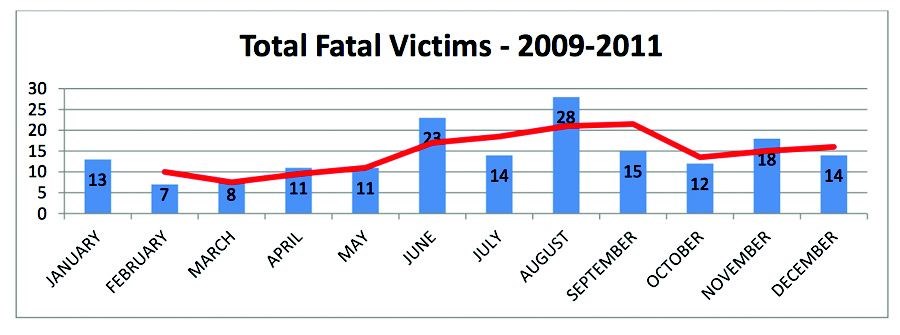Lives are being saved thanks to a change in policing tactics on northern roads, according to the RCMP and ICBC.
Data was released on Tuesday that showed a 32 per cent drop in the death rate on northern roads in the past 10 years. The data also showed that this decade of improvements was the second slope in statistics since 1996, and 2002 was a pivotal year. It was when things went temporarily wrong for the region's highway patrols, but also launched the most sustained program of improvements northern roadways have ever seen.
"Traffic Services has completely adjusted its way of doing business since 2002," said RCMP Staff Sgt. Pat McTiernan, unit commander of Prince George Regional Provincial Traffic Services.
"Prior to 2002, the majority of the enforcement work was based on the simple generation of numbers. In other words, members were gauged on how many tickets per day they wrote with no real regard for the crash picture for their particular area.
"Today we are very strategic in how we do business and members are out there doing specific functions based on the overall crash picture."
The north's top traffic cop, Insp. Eric Brewer, concurred that a massive shift took place then, and it hinged on money.
"In and around 1996, the province provided enhanced funding for what was called TTEP [Targeted Traffic Enforcement Program]. That funding was used to target specific areas and issues," said Brewer.
"You can see a marked reduction from 93 deaths in 1996 to a low of 60 in 2000. That funding was terminated and as a result of the lack of resources on the roads, we see another spike upwards to a high of 90 deaths in 2002."
Unnerved by the sudden jump, traffic safety officials and government worked together on corrective measures. Realizing they had no money for enhanced road coverage, police knew they had to hone in on the root problems killing people in highway incidents.
Also, new money emerged for a program called the Integrated Road Safety Unit (IRSU) - police members dedicated solely to roadway enforcement as needed in any sector of the region.
By 2004, IRSU was fully operational, as was the menu of strategic enforcement (focus on high-crash intersections, high-impairment weekends, etc.) linked to injuries and death. The number of victims began again to decline.
Every year since 2004's 81 fatalities there has been steady reductions down to a low of 59 killed in 2009 and a still-lower total of 69 and 62 the past two years.
Police also credit other factors like technological advancements and legislative improvements.
"We will need to continue our overall strategies," said Brewer. "At the end of the day, the public can share in these successes as it is their change in behaviour and attitudes that can do the most to reduce death and injury on our roadways."



